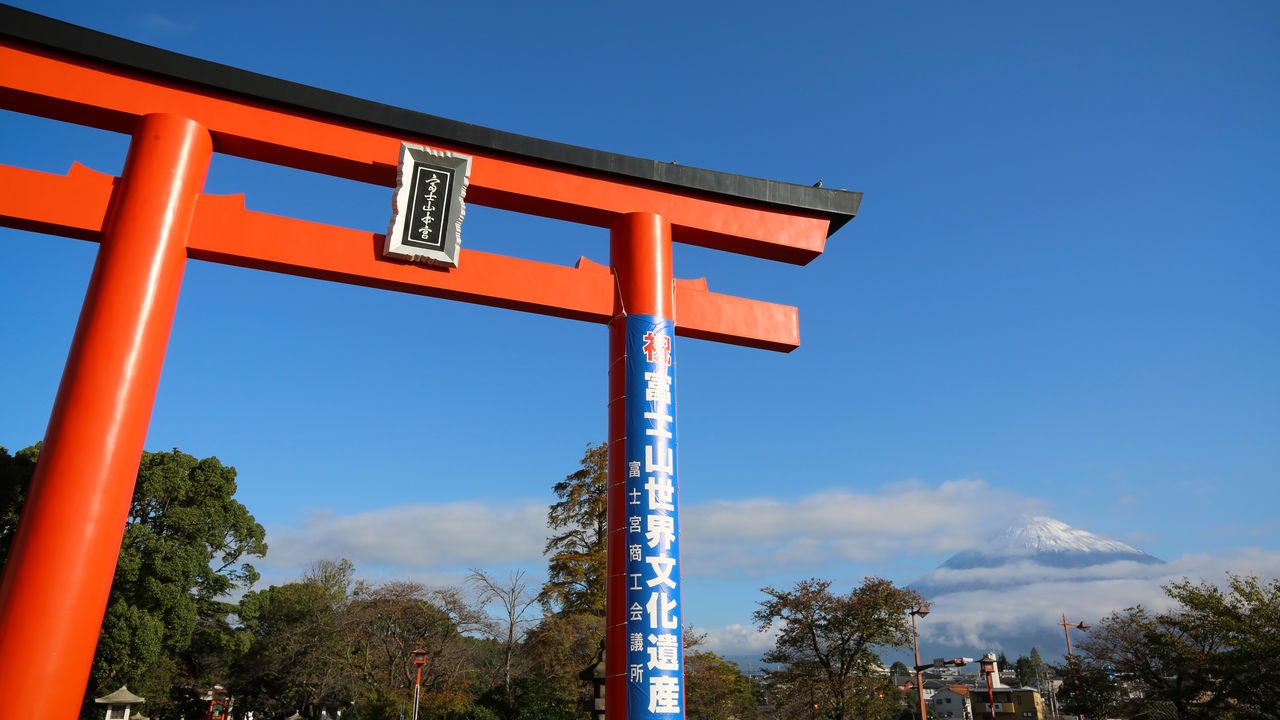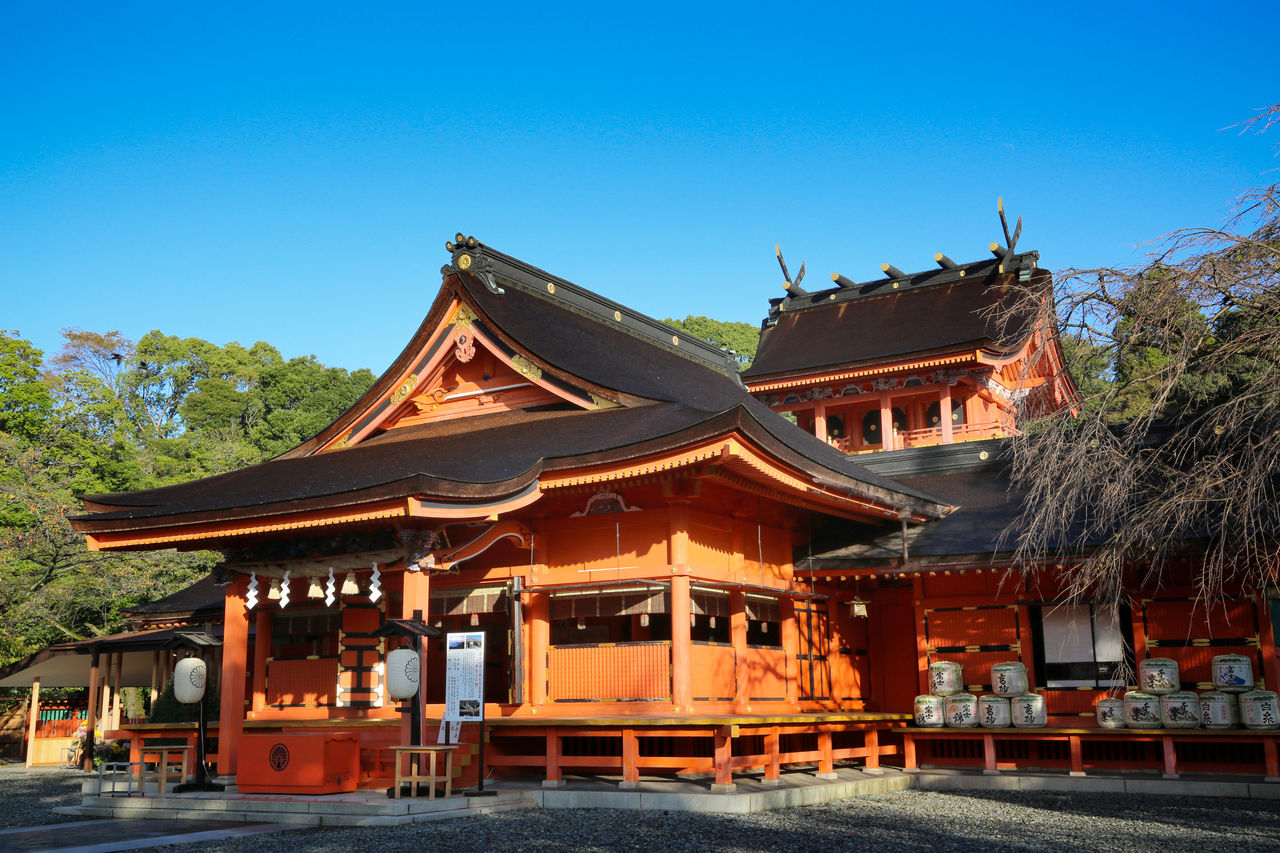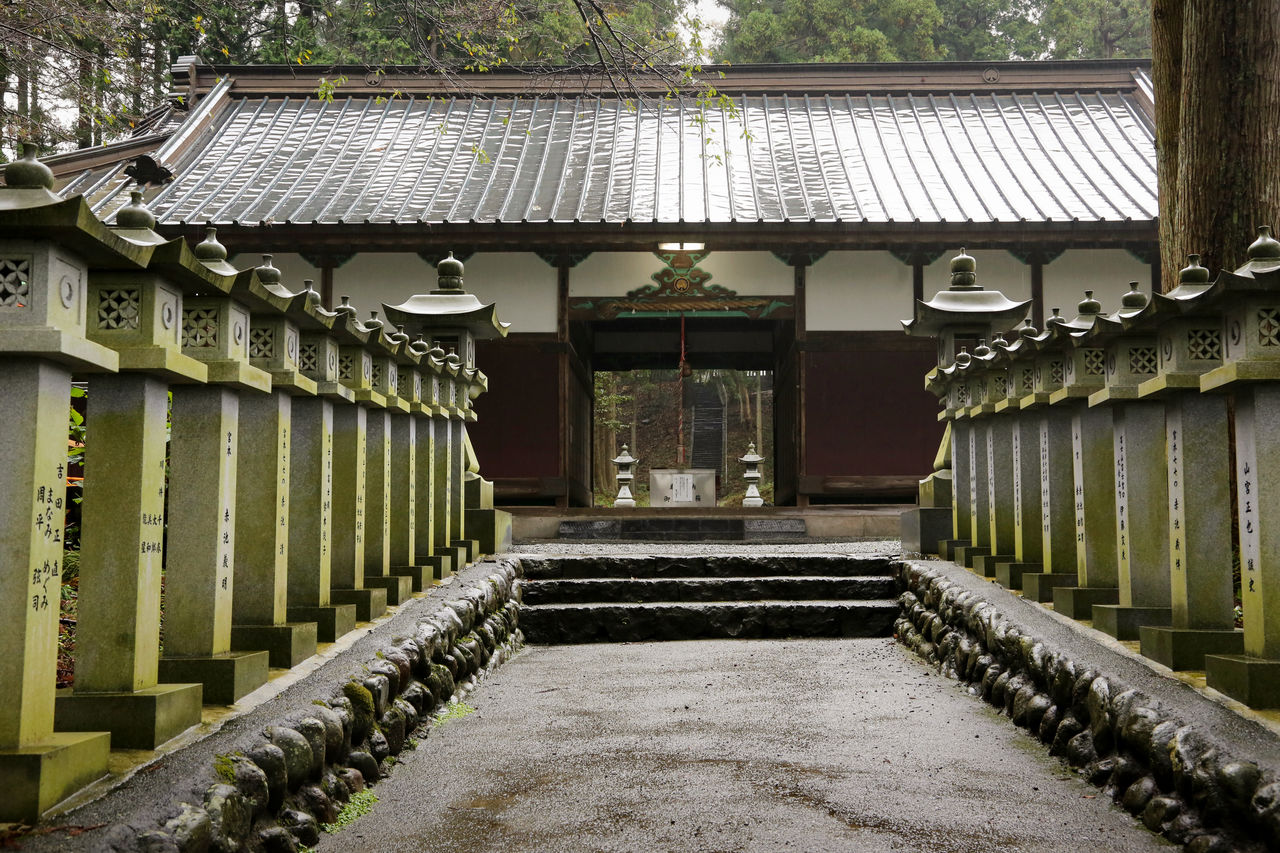
Japan’s Highest Shrine: Fujisan Hongū Sengen Taisha
Guideto Japan
- English
- 日本語
- 简体字
- 繁體字
- Français
- Español
- العربية
- Русский
A Shrine to Placate Mount Fuji’s Wrath
Mount Fuji stands tall and regal, surrounded only by its own wide alluvial plain. A beautiful mountain, it is also a deadly volcano that has erupted numerous times. Since the most ancient of days it has been worshiped as a sacred mountain with a spirit of its own.
Built to placate an angry, erupting Mount Fuji, Fujisan Hongū Sengen Taisha is located in the city of Fujinomiya in Shizuoka Prefecture. Its tutelary spirits are Asama no Ōkami—once known as Fuji Ōkami—and Konohana no Sakuya Hime, the “blossom princess” revered as the maiden of the shrine. Fujisan Hongū Sengen Taisha serves as the head shrine for more than 1,300 subsidiary shrines bearing its name throughout the country.
Historical records indicate that the current shrine was built in 806 to house the kami of the Yamamiya Sengen Jinja, some 6 kilometers to the north. Yamamiya Sengen Jinja is a prime example of an ancient site of Mount Fuji worship in which the focus of worship is not a main shrine building but rather a sacred expanse of land surrounded by ancient trees.
Fujisan Hongū Sengen Taisha enjoyed the direct patronage of the imperial court. A record of laws and customs known as the Engishiki compiled in 927 lists Fujisan Hongū Sengen Taisha as a myōjin, or eminent shrine, and as the primary shrine (ichinomiya) of the Suruga domain, today’s central Shizuoka Prefecture.
Ieyasu’s Patronage and the Mount Fuji Pilgrimages
Numerous personages well-known in Japanese history patronized Fujisan Hongū Sengen Taisha, among them Minamoto no Yoritomo (1147–99), Hōjō Yoshitoki (1163–1224), Takeda Shingen (1521–73) and his son Katsuyori (1546–82), and Tokugawa Ieyasu (1543–1616). After his victory at the Battle of Sekigahara, Ieyasu donated funds for the building of more than 30 structures on the shrine grounds. He also declared all the land above the eighth station of Mount Fuji to belong to the shrine, which to this day holds the property rights to the summit. Many of the shrine’s buildings were destroyed in major earthquakes in 1633, 1854, and 1855 , but the main honden, the haiden worship hall, and the rōmon towered gateway to the shrine, all originally built by Ieyasu, remain intact.
The Okumiya shrine at the summit of Mount Fuji is a detached shrine of Fujisan Hongū Sengen Taisha. A shrine priest resides there every year during the mountain-climbing season in July and August. In the Edo period (1603–1867) and later, group pilgrimages to Mount Fuji became popular. The common practice was to ascend the mountain to worship at the Okumiya shrine and then to climb each of the eight peaks surrounding the main crater in a practice known as Ohachimeguri.
 The honden at Fujisan Hongū Sengen Taisha.
The honden at Fujisan Hongū Sengen Taisha.
In June 2013, Mount Fuji was added to the UNESCO World Heritage list as a Cultural Site having significance as an object of pilgrimage and a source of inspiration for the arts. Fujisan Hongū Sengen Taisha is included among the sites of cultural interest within the World Heritage listing. The UNESCO designation and Mount Fuji’s proximity to Tokyo have helped to boost its popularity as a tourist destination. In 2017, a record 285,000 people climbed the famous mountain. Unfortunately, this has led to major litter problems and damage to climbing routes.
Access: 30 min taxi ride from the Shin-Fuji Station on the Tōkaidō Shinkansen line or 10 min walk from the Fujinomiya Station on the JR Minobu line.
(Originally published in Japanese. Text by Toya Manabu. Photographs by Nakano Haruo. Banner photo: The second torii marking the entrance to the Fujisan Hongū Sengen Taisha.)
